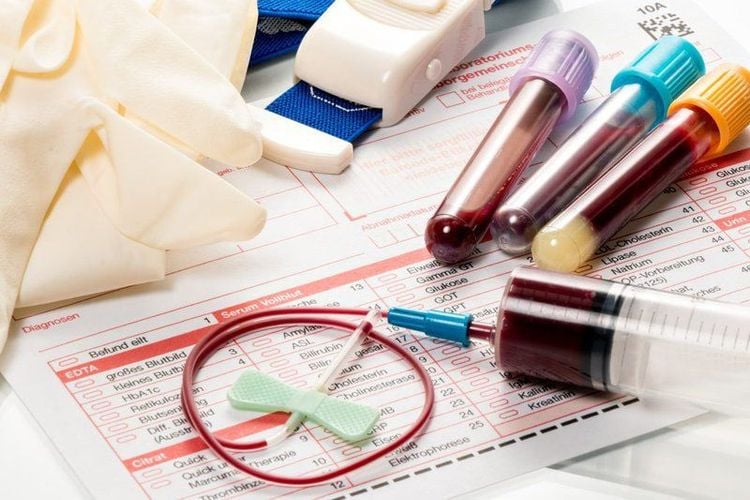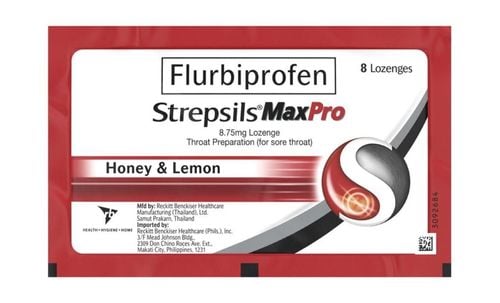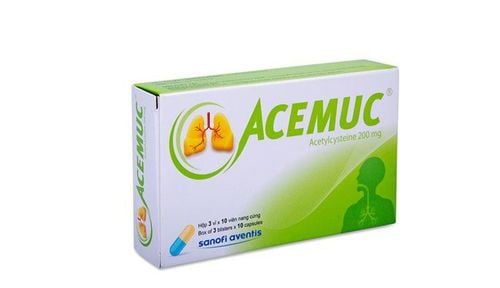This is an automatically translated article.
The article was consulted with Specialist Doctor II Nguyen Van Thai - Ear, Nose Throat Doctor - Department of Medical Examination & Internal Medicine - Vinmec Danang International General Hospital.Acute pharyngitis is an acute inflammation of the oropharyngeal mucosa associated mainly with tonsillitis of the palate, in rare cases associated with tonsillitis at the base of the tongue. Therefore, there is a tendency to re-enter into pharyngitis - acute tonsillitis.
1. Causes of acute pharyngitis
1.1. Causative agent Acute pharyngitis is mainly caused by viruses, accounting for 60-80% of cases, including infection with Adenovirus, influenza virus, para-influenzae virus, Coxsakie virus, Herpes virus, Zona virus, EBV,...Cases caused by bacteria account for 20-40%, including streptococcus (hemolytic group A, groups B, C, G are rare), Haemophilus influenzae, Staphylococcus aureus, Moraxella catarrhalis, anaerobic bacteria. Neiseria, pneumococcal, and Mycoplasme bacteria are very rare.
1.2. Pathogenesis of pharyngitis Due to changes in weather, especially in the cold season. Acute pharyngitis usually begins with a viral infection. Viral toxins, tonsil anatomy, and body resistance cause superinfection (a second infection on top of a previous infection, especially by a microbiological agent). other organisms of exogenous or endogenous origin, which are resistant to the treatment used against the primary infection) other inclusions, usually commensal bacteria already present in the pharynx, such as streptococci, pneumococcus and Especially dangerous is the group A hemolytic streptococcus.
The disease spreads if it comes in contact with the saliva and nasal secretions of the sick person.
2. Diagnosis of acute pharyngitis

● Foreign body in the mouth: Sudden sharp pain in the throat while eating.
● Inflammation of the oral mucosa: The oral mucosa is red, can see slips and ulcers on the cheeks and tongue.
Acute pharyngitis usually comes on suddenly. This disease is diagnosed based on the following three types of symptoms:
+ Systemic symptoms:
Moderate fever 38 - 39°C or high fever, chills, headache, body aches, fatigue, loss of appetite. Mandibular angle ganglion reaction, painful pressure.
+ Physical symptoms:
− Sore throat, especially when swallowing, even when swallowing liquids. When swallowing, coughing, or speaking, pain stings in the ears.
− May have intermittent cough, dry cough or cough with mucus.
+ Physical symptoms:
− The entire mucous membrane of the throat is red and secreted. Lymphatic organization in the posterior wall of the pharynx is red and has prominent capillaries.
− The two palatine tonsils are also swollen and red, sometimes with white pus spots or a white layer (such as white porridge) covering the tonsil surface.
− The front and rear pillars are red.
− There is a slight swelling and pain in the angular lymph nodes of the jaw.
In case of acute pharyngitis, the blood count test in the first stage does not increase white blood cells, but if there is superinfection, the neutrophils are elevated. In addition, doctors also appoint a microbiological test of throat swabs to culture bacteria to identify the cause of the disease.

3. Progression and complications of acute pharyngitis
If it is caused by a virus, the disease usually lasts 3-5 days, then it goes away on its own, the symptoms gradually decrease. If it is due to a bacterial infection. In particular, streptococcal disease is usually more prolonged and requires systemic antibiotic treatment to avoid complications.● Local complications: Inflammation or abscess around the tonsils, inflammation or abscesses of the lateral pharyngeal spaces, abscesses in the posterior wall of the pharynx in children 1 - 2 years old, gangrene of the neck is very rare. encountered, but the prognosis is very severe.
● Nearby complications: laryngitis, pneumonia, acute otitis media, acute sinusitis, rhinitis.
● Distant complications: Especially if it is due to hemolytic streptococcus, it can cause nephritis, arthritis, heart inflammation, streptococcal toxic shock or, in particular, sepsis.
To prevent acute pharyngitis and other respiratory diseases for both children and adults, should avoid direct contact with people who are suffering from upper respiratory tract infections, flu,... Improve living standards, increase health resistance of the body, keeping the living environment clean. Quit smoking and alcohol, and keep children and loved ones away from secondhand smoke. Good oral hygiene. Fully vaccinated children.
Please dial HOTLINE for more information or register for an appointment HERE. Download MyVinmec app to make appointments faster and to manage your bookings easily.














